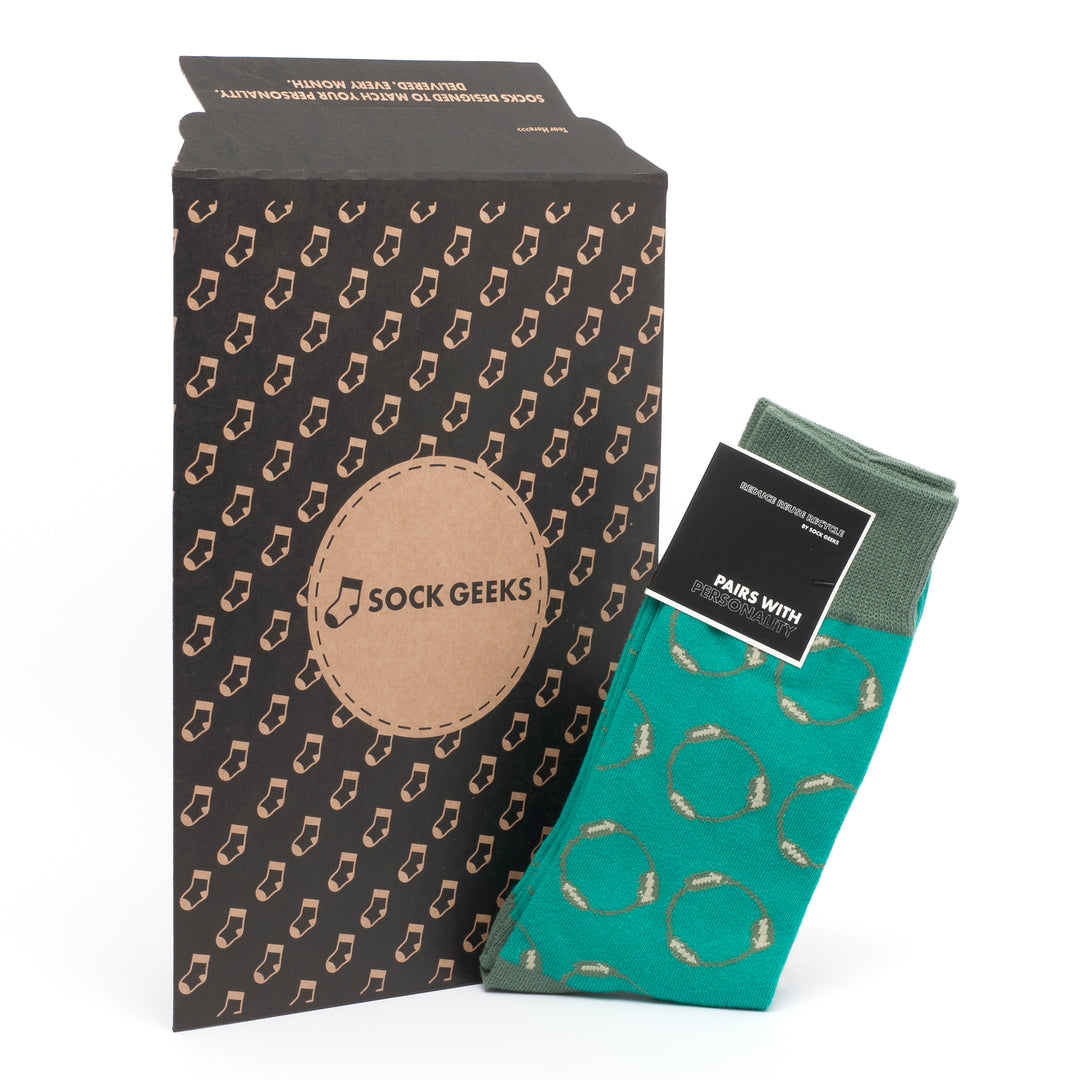How science can help you sort out your socks
Key Takeaways
- Sorting algorithms have a foundational place in computer science. They can transform mundane chores, such as sorting our socks, into easier, more intuitive experiences by providing intelligent, organized solutions.
- A scientific approach to sock organization saves time and frustration. It’s the smart way to save time and effortlessly find the right product.
- You could implement algorithms such as bubble sort and quicksort for actual use. This is what makes sock sorting step-by-step and foolproof.
- Some practical steps to take would be to sort socks by type or colour, use small bins or jars for separation, and implement a repeatable sorting method each time.
- Scientific methods of sorting socks maximize orderliness in your life. They encourage mindfulness within your daily routines and teach you to minimize distractions and clutter in your home.
- Using these methods, you can make sorting your socks a fun and productive experience. This change will improve your productivity for the rest of the day.
Science can help you sort your socks by using some basic sorting algorithms and classification techniques to pair them up. These techniques, familiar in the worlds of computing and data management, can help automate and accelerate routine tasks to save time and effort.
You can modify the bubble sort algorithm to sort socks by colour, size or type. It does so by comparing and swapping items in a loop. Just as in the principles of science, sorting by type like colour or fabric can further organize your drawer.
Such a practical application of science transforms a daily, mundane chore into a structured system that saves time and prevents clutter from accumulating. With a little science, you can make sorting socks a lot easier.
This strategy keeps you organized and ensures you can quickly find what you need every time you open your drawer.
What Are Sorting Algorithms?
Sorting algorithms are super useful techniques to sort a list of items into a particular order. They can sort items by alphabetical order, numerical order, or any other order that makes sense. When applied to real-world scenarios, this idea can feel far more theoretical but is shockingly grounded, especially when considering tasks like sock classification.
Sorting algorithms are at the root of everything we do, from sorting clothes in your closet to organizing massive amounts of data out in tech. Their structure and application are fundamentally logical, which makes them extremely powerful for addressing everything from basic to advanced problems, such as efficiently sorting laundry.
In short, sorting algorithms are like a recipe that sorts messy data step-by-step. Think of a mixed pile of socks in various colors, patterns, and sizes. It can be daunting, but once you tackle them in a methodical way, like using a level pile sort, it is both fun and rewarding.
The same basic principles hold true for algorithms. For instance, the “divide and conquer” technique takes a big task and divides it into smaller, repeatable chunks. That might look like sorting socks by color, then by size, and then pairing them up, which is a practical example of sock folding.
These strategies are easily transferable to programming, where we use analogous techniques to classify intricate data. There’s a wider reason for wanting people to understand algorithms. They inspire us to think big, act bold, and become better global citizens, much like how we all strive to match odd socks.
The Gittins index is a concept that comes from mathematics. It informs your decisions on whether to double down on your existing choice or look for something better. When you put it into practice, you sharpen your judgment, similar to how one might decide on the best way to organize their laundry.
It’s the difference between experimenting with a new sorting algorithm versus using the old reliable one. Another useful piece of advice is the “37% rule.” It recommends that you use 20 percent of your time to develop alternatives before you lock in. Taken together, these ideas illustrate that algorithms are tools for life, not just for computers, much like how we tackle our laundry tasks.
The efficiency of sorting algorithms is usually expressed in a mathematical way. For example, sorting a list takes more time the larger the list is. This kind of relationship is represented by functions such as f(x) = x.log(x), which is crucial when considering the time complexity of sorting large batches of items.
This is a perfect example of how a methodical process is really important, particularly when you’re talking about the big lifts that come with organizing your belongings.
Benefits of Scientific Sock Organisation
Sock organization might seem like an easy task, but it can be done better—with science. These systematic strategies offer meaningful benefits to both communities and taxpayers. Britons lose an average of 1.3 socks per month – a total of 15.6 socks each year. It might sound like small potatoes, but lost socks really do accumulate, leading to a significant sock classification issue.
In the long run, this creates avoidable waste and replaces costs. By taking a more systematic approach to these efforts, states can avoid these dangerous gaps, while saving time and taxpayer dollars in the process. An efficient way to manage sock organization is to categorize them by color and type, such as white socks, grey socks, and black socks.
Intriguingly, research has shown that almost half of our daily actions are done out of habit. By implementing a thoughtful sock organization system, you may even build new habits that transfer beyond your closet. Give yourself 10 minutes to sort your socks into piles, which can include odd socks and single socks.
A little bit of awareness and a quick analysis of your collection can make you a more savvy organizer. As children age, they form strategies to better their sock organization. This habit-building process, as it turns out, gets easier with age, as they learn to match pairs efficiently.
Financially, the case for benefits is just as strong. By adopting a more efficient sock organisation system, you can save big. The fewer socks you lose, the more money you’ll save.
In reality, preventing replacements that weren’t needed could save a net present value of £1,871.12 within the first year alone. When paired with intelligent shopping habits, you’ll be saving even more. For instance, get socks wholesale or purchase at low-cost providers like Aldi, which saves regular family units £15–£23 per week on groceries.
This approach makes living sustainably a lot simpler and more enjoyable, too. Finally, being organised but having a sense of execution is important. Schedule a few percent of your time for periodic maintenance and updates.
This easy step keeps you informed of your sock stock and ensures that sock folding becomes a fun activity. This smart, hands-on approach ensures long-term efficiency and gets you the most out of every dollar you invest in transportation.
Sorting Socks Using Algorithms
Sorting socks may feel like a trivial problem, but algorithms provide a deceptively powerful method to tackle this common chore. By using these sorting techniques, you can simplify the sock pairing process and save yourself time digging through a mixed-up heap.
Algorithms, at their most fundamental level, are just a set of step-by-step instructions, and they’re the perfect tool even for a problem as simple as sock sorting.
We’ll start with a simple introduction example. The most straightforward is insertion sort. Imagine you pull out a red sock. You peer into the heap as if it were a great cosmic riddle, looking for the sock’s soulmate.
As you know, this process, though common, is not the most effective. It’s like sorting through ten job applicants when only one can possibly score in the top percentile on a resume-based evaluation. This tedious hand picking can be made easier.
Rather than sift through your entire pile over and over, you might be able to use a more strategic method. Begin by placing the socks in two lines from largest to smallest, from dark to light, with stripes to polka-dots. Matching them is then simply a matter of matching up these rows, maximizing both labour and time.
If you’re in need of the bare minimum in efficiency, algorithms such as Moore’s algorithm can assist in optimizing your work order. To reduce the unmatched socks, begin by calculating the greatest amount of pairs that can be created. This gives you a specific target to aim for in your sorting efforts.
Make the matching loop run one fewer time than the total number of pairs. That’s because if you sort this way, the last two socks will match every time and you’ll save yourself an extra step. If you want to squeeze even more efficiency out of the process, spend 37% of your time figuring out what’s in the pile.
Next, begin the real matching process. While this initial sorting step is easy to overlook, it can make the following steps much easier.
More efficiency could be achieved through the use of robots or other automated solutions. For instance, an automated sock matcher can leave its matching loop. Specifically, it will do this whenever the unmatched sock pile has one sock or fewer.
Practical Steps for Sock Organisation
It sounds like a boring workday task. With the right approach based on science, sock organization can be a fun and surprisingly productive process. Take a methodical approach to the task. By keeping up with regular maintenance, you’ll save valuable time, eliminate unnecessary clutter, and make the most of your storage area.
Making is the first step to a well-organised sock drawer. Forget the standard balling approach. Instead, place one sock over the other and fold them into thirds, fourths or even fifths depending on how long they are. These tidy little bundles stand on their own in your drawer.
This thoughtful design allows you to quickly identify and reach for each pair. Folding this way keeps you from stretching the elastic as well, which extends the lifespan of your socks.
For more efficient organisation, drawer dividers are a lifesaver. These are very simple tools but they allow you to easily separate your socks by colour, style or function. Designate an area for sports socks.
Keep dress socks in a separate location and store casual or outdoor socks in their own section of your drawers for easy access. This separation keeps dangerous pairs from making a chaotic mismatch. Now you can quickly pick out the perfect pair for any occasion!
Those darn mismatched socks —all our pet peeves rolled into one, here’s how to avoid this practical problem. Wait at least six months before disposing of these mismatched socks, allowing time for their lost partners to return.
After this timeframe, you can use them for cleaning or crafting projects, so no sock is left behind. Finally, habit is a factor as well. Research indicates that the time it takes to adapt to a new routine is typically about 20 days.
Initially, these strategies may seem cumbersome, but don’t give up! With regular maintenance, such as folding and organizing your socks once a week, big impact comes from little action, helping you keep a neat and peaceful drawer long-term.
Advantages of Scientific Sorting Methods
While sorting socks may seem like a trivial scientific pursuit, sock classification methods make the process faster and more accurate. Leverage scientific sorting methods with fancy techniques such as algorithms and statistical models to sort the disarray of unpaired socks, especially those lonely socks. Approach the issue with transparency and uniformity! These methods aren’t just theoretical; they provide real-world advantages that simplify the job and cut the time and work in half.
Among these, HADES is a high-performing, highly accurate, high-speed sorting algorithm. Unlike traditional approaches, HADES uses cutting-edge statistical modeling to increase the efficiency of the process. For example, computations predict a speedup of around 3.14 times the input size. This means that the bigger your laundry pile, the more time you get back.
The new algorithm ensures a correct solution every time, eliminating the regret of unmatched socks. Additionally, it is hardware agnostic, meaning that it can scale up from simple to more advanced hardware, making it a versatile choice for sock folding tasks.
Another idea that could improve sorting even further is the Gittins index, which computes the solution to the exploration vs exploitation problem. In real-world terms, this means choosing between pursuing a new, untested approach or sticking with something that’s definitely worked.
Third, the next time you need to find a particular sock, focus 37% of your effort on finding it. This strategy increases your odds of locating it! The Gittins index uses a discount factor to rank by importance. This approach gives you a concrete number to inform your decisions, adding a level of rigor to your process, even for simple tasks.
Time management is another hugely important factor. If one sock takes twice the effort to find as the other, consider whether you want to go looking for it. Only give it priority if its level of importance justifies the additional time and effort.
By adhering to this principle, we avoid wasting time with frivolous delays and make the process more effective and efficient.
Conclusion
Sorting your socks can feel like a mundane task. A little science goes a long way to making it a faster and easier process! With the help of some sorting algorithms, the task becomes much easier and your sock drawer will be organized. It saves you time in the getting ready process and helps your socks last longer. These approaches are very hands-on and accessible to experiment with, even if you’re not a whiz with technology or math.
Science isn’t only for the classroom – it’s all around us. Work with these basic principles and you’ll notice the difference in the sense of order they create. So what are you waiting for try it today! Even a little bit of order helps you get to the right place. Begin with a few simple changes, and you may discover you’re incorporating these science-backed hacks into other areas of your life as well.
Frequently Asked Questions
What is a sorting algorithm?
A sorting algorithm is a process that puts items into some kind of order, such as organizing socks into pairs. It takes a procedural approach to sorting them by size, color, or type, making it an efficient way to tackle the laundry, especially when dealing with lonely socks or odd socks.
Why should I use science to organise my socks?
Utilizing a scientific approach to sock classification will save you time, diminish sock-sorting stress, and guarantee that your socks, whether white socks or odd socks, are always paired and easy to find.
How can algorithms help with sock sorting?
Algorithms offer an efficient way to sort socks by color, size, or pattern, ensuring a functional and accessible space in your drawer, while simplifying the sock classification process and eliminating the guesswork often associated with organizing laundry.
What are the benefits of sock organisation?
Convenience paired with time-saving and frustration prevention makes for a much more enjoyable everyday routine, especially when organizing your laundry. You’ll save your socks on the long haul by preventing odd socks from getting separated and worn out because they’re being kept in the wrong way.
Can I apply these methods to other items?
Indeed, the same scientific sorting principles can be applied to organize clothing, such as socks, using methods like naive sort or level pile sort, undergarments, accessories, or even kitchen items.
What tools do I need to get started?
All you need is your sock collection, a flat even surface, and the patience to execute some easy steps for sock classification. Optional tools like drawer dividers or sock organizers can help efficiently sort socks.
Is sock sorting worth the effort?
Hell yeah, sign me up for that. It’s an efficient way to declutter your environment, organizing piles of laundry, and keeps your closet organized. Bonus – you’ll never spend time looking for a lonely sock again! It’s a modest investment that yields enormous returns.




















Leave a comment